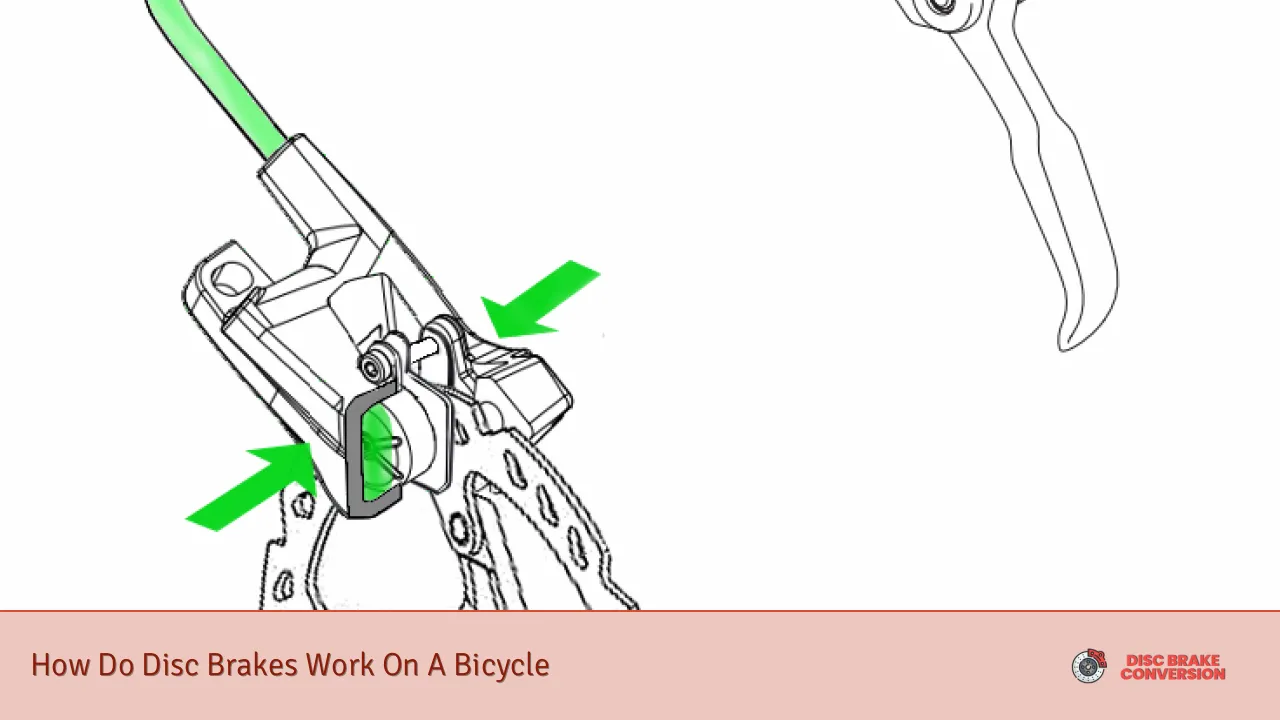Disc brakes have become a popular choice for bicycles, providing enhanced stopping power and better control compared to traditional rim brakes. Understanding how disc brakes function is essential for cyclists who want to maintain their bikes effectively and enhance their riding experience. This article will delve into the mechanics of disc brakes, the types available, their advantages and disadvantages, and maintenance tips.
Feature Description Braking Mechanism Uses friction between brake pads and a rotating disc to slow down the bike. Types Hydraulic and mechanical disc brakes.
The Mechanics of Disc Brakes
Disc brakes function through a straightforward yet effective mechanism. At the core of this system is a rotor, which is a flat, circular disc typically made of steel or aluminum. This rotor is mounted on the wheel hub and rotates with the wheel. When the cyclist applies the brake lever, either hydraulic fluid or a cable system engages the caliper, which houses brake pads.
Hydraulic vs. Mechanical Disc Brakes
- Hydraulic Disc Brakes: These systems use hydraulic fluid to transfer force from the brake lever to the caliper. When the lever is pulled, it pushes a piston that forces fluid through a line to another piston in the caliper. This action pushes the brake pads against the rotor, creating friction that slows down or stops the bike. Hydraulic systems are known for their superior modulation and stopping power.
- Mechanical Disc Brakes: In contrast, mechanical disc brakes utilize a cable system similar to traditional rim brakes. Pulling the brake lever pulls a cable that actuates an arm in the caliper, pushing one or both brake pads against the rotor. While generally more affordable and easier to maintain, mechanical systems may not provide the same level of performance as hydraulic ones.
Both types of disc brakes offer significant advantages over rim brakes, particularly in terms of stopping power and performance in various weather conditions.
Advantages of Disc Brakes
Disc brakes present several benefits that make them an attractive option for cyclists:
- Greater Stopping Power: Disc brakes provide significantly more braking force than rim brakes. This means less effort is required at the lever, which reduces muscle fatigue during long rides or steep descents.
- Better Modulation: Riders can control braking more precisely with disc brakes, allowing for smoother stops and reducing the risk of skidding. This modulation is especially beneficial in technical riding situations.
- Consistent Performance: Unlike rim brakes, which can lose effectiveness in wet conditions due to water on the rims, disc brakes maintain their performance regardless of weather conditions. This reliability enhances safety for riders.
- Reduced Wear on Tires: Since disc brakes do not make contact with the wheel rim, they prevent wear on tires and rims over time, extending their lifespan.
- Longer Brake Pad Life: The design of disc brakes allows for longer-lasting brake pads compared to traditional rim brake pads.
Disadvantages of Disc Brakes
Despite their advantages, disc brakes also have some drawbacks:
- Weight: Disc brake systems can add weight to a bicycle compared to lighter rim brake setups. This can be a consideration for competitive cyclists focused on performance.
- Cost: Generally, disc brake systems are more expensive than rim brakes due to their complex components and installation requirements.
- Maintenance Complexity: Hydraulic systems require bleeding and maintenance that can be more challenging than adjusting mechanical systems. Riders may need specialized tools or professional help for maintenance tasks.
- Noise: Some disc brake systems can produce noise when braking, especially if not properly maintained or if contaminated with dirt or moisture.
Maintenance Tips for Disc Brakes
Proper maintenance is crucial for ensuring that disc brakes perform optimally throughout their lifespan:
- Regular Inspection: Check brake pads for wear regularly; replace them when they become thin or unevenly worn.
- Clean Components: Keep rotors and pads free from oil and debris. Use isopropyl alcohol or specific cleaning solutions designed for bike components.
- Ensure Proper Alignment: Make sure that the caliper is aligned correctly with respect to the rotor. Misalignment can cause rubbing noises and uneven wear on pads.
- Bleed Hydraulic Systems: If you notice a spongy feel at the lever in hydraulic systems, it may be time to bleed the system to remove air bubbles trapped in the fluid line.
- Adjust Cable Tension: For mechanical systems, ensure that cable tension is adjusted correctly so that pads engage fully when you pull the lever.
FAQs About How Disc Brakes Work On A Bicycle
- What are disc brakes?
Disc brakes use friction between brake pads and a rotating disc attached to the wheel hub to slow down or stop a bicycle. - How do hydraulic disc brakes work?
Hydraulic disc brakes use fluid pressure to activate pistons in a caliper that push brake pads against a rotor. - What are mechanical disc brakes?
Mechanical disc brakes operate using a cable system that pulls an arm in the caliper to engage brake pads against the rotor. - What are the benefits of using disc brakes?
Disc brakes offer greater stopping power, better modulation, consistent performance in any weather condition, reduced tire wear, and longer pad life. - How do I maintain my disc brakes?
Regularly inspect components, clean rotors and pads, ensure proper alignment, bleed hydraulic systems when needed, and adjust cable tension for mechanical systems.
In conclusion, understanding how disc brakes work on bicycles enhances your ability to choose suitable braking systems based on your riding style and maintenance capabilities. With their numerous benefits over traditional rim brakes—such as improved stopping power and reliability—disc brakes have become increasingly popular among cyclists across various disciplines. Proper maintenance ensures these systems perform optimally while extending their lifespan, making them a worthwhile investment for any serious cyclist.

